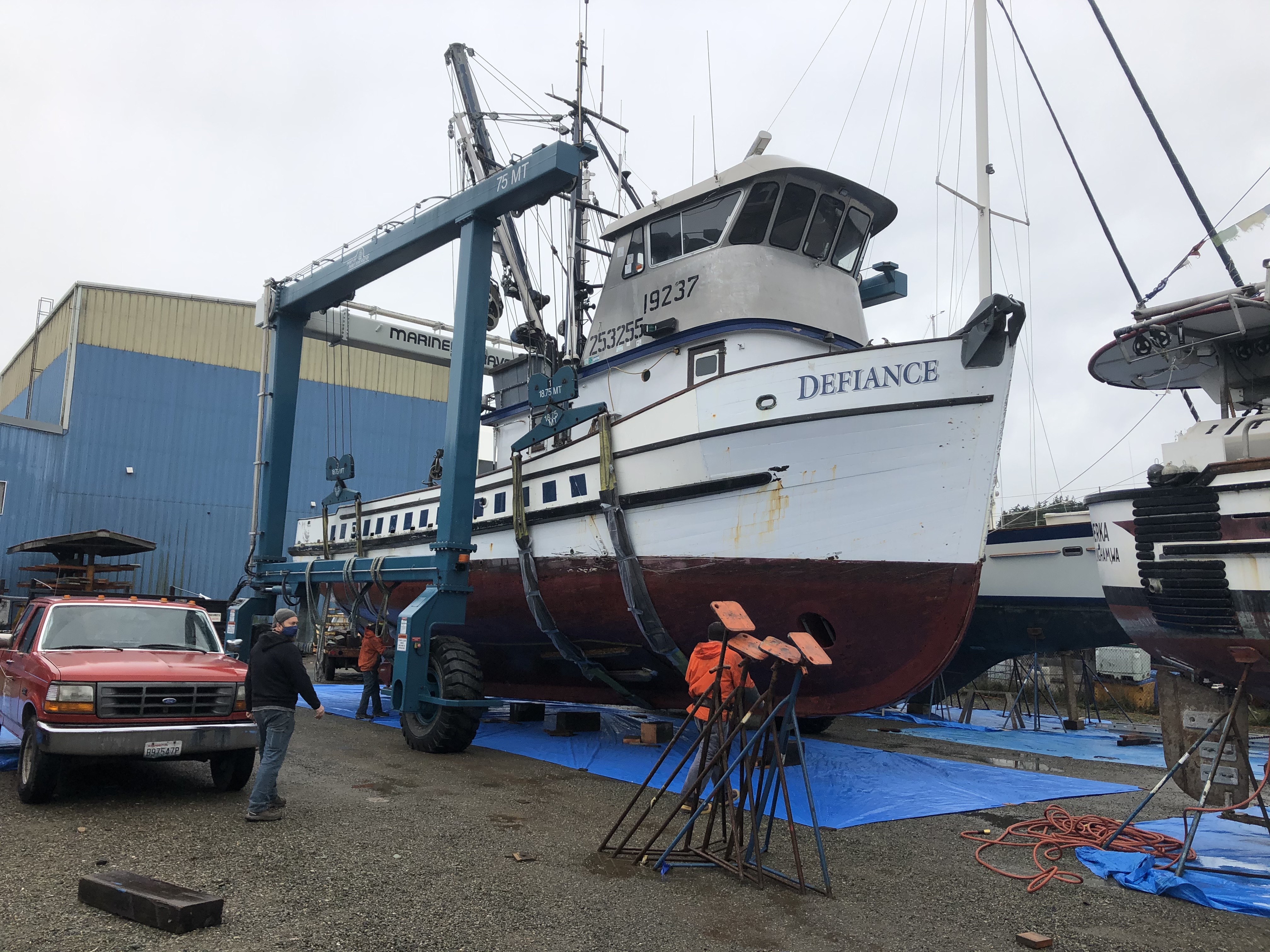At the Port Townsend Shipwrights Co-op, planks were being removed from the 58-foot seiner Defiance the second week in January, all because of an abrupt encounter with a large rock that put “a good-size hole in the bottom of the boat and tore the keel cooler off,” says Brad Seamans, one of the co-op’s 12 owners and the one in charge of the Defiance project.
Seamans admits he’s surprised the Defiance didn’t sink.
“He got real lucky,” Seamans adds. The Defiance managed to limp into the Alaska port of Cordova to be hauled out and have a large plywood patch fastened over the impact area, received a new keel cooler and the fuel tank was patched.
The Defiance finished the season and then was hauled at the Port Townsend Shipwrights Co-op in Port Townsend, Wash. Seamans estimates when the Defiance leaves, she’ll go out with at least 10 new frames and 20 planks. That doesn’t include some frames Port Townsend Shipwrights Co-op had sistered seven years ago, which splintered out to the inside of the boat upon hitting the rock. Those will have to be replaced, and a couple of ceiling planks might also be replaced.
Prior to starting work on the Defiance, Port Townsend Shipwrights received a load of Port Orford cedar from Oregon, which will be used for the new planking. The planking will be fastened with galvanized #20 screws.
A hole needs to be cut in the fish hold to get at the 10-foot-long fuel tank that was damaged. It will be replaced with two 5-foot tanks.
The Polaris, an 82-foot wooden halibut schooner built in 1913, will be hauled in February to be caulked along the starboard side. She’ll also have the shaft aligned and get bottom and topside painting.
The 65-foot Evening Star, built in 1945, left in January after being set up to fish with pots. She had always been a traditional longliner. Last season, Seamans says a sonar interference machine was used to try and keep whales away from the fishing gear, and avoid having to go to pots.
“But it was more an attractor than a deterrent for the whales,” he says. Thus the switch to pots.
In June 2020, Bay Weld Boats completed a 23' x 11' 6" seine skiff that would be matched up with the seiner Mary Ann for a Kodiak, Alaska, fisherman. The seine skiff had the largest water jet installed in a Bay Weld Boats-built seine skiff and was the heaviest seine skiff to come out of the Homer, Alaska, boatshop by about 30 percent.
A lot was expected from the skiff. “It will be noteworthy,” said Bay Weld Boats’ Eric Engebretsen, even before the skiff was completed. After sea trials and a season of fishing, Engebretsen’s predictions seem to have been born out.
Engebretsen figured a 6,000-pound bollard pull was possible, and he was very close when the maximum bollard pull turned out to be 5,950 pounds.
“It was a significant jump from anything we had built before,” he says. A 35-mph maximum speed was hoped for, and that was delivered.
The key to these performance figures was the Thrustmaster HI500 water jet with a 20-inch pump matched up with a 500-hp 8.3 L Cummins QSC through a ZF 305-3 marine gear. Previously Bay Weld Boats’ best bollard pull delivered by a water jet hooked up to a 500-hp diesel was 4,600 or 4,700 pounds. This “was a pretty significant jump in pulling power for no more horsepower,” noted Engebretsen.
Bay Weld Boats has built skiffs that topped out at 35 mph, but those skiffs came in at about 9,000 pounds (dry weight), whereas the Mary Ann’s skiff is 10,200-pounds (dry weight). A lot of the additional weight comes from being two feet longer than most earlier skiffs and being built with a double-plated bow and extra framing throughout. Then add to the boat’s weight a 500-gallon fuel capacity, compared to a normal skiff’s 200 to 250 gallons.
The benefit of the extra fuel is that fishing time is extended between refuels, while the beefed up scantlings and their extra weight produces a skiff that “performs better in rough weather,” says Engebretsen. “It’s kind of a closer match to what a seiner’s capabilities are. It’s not a weak link anymore.”







